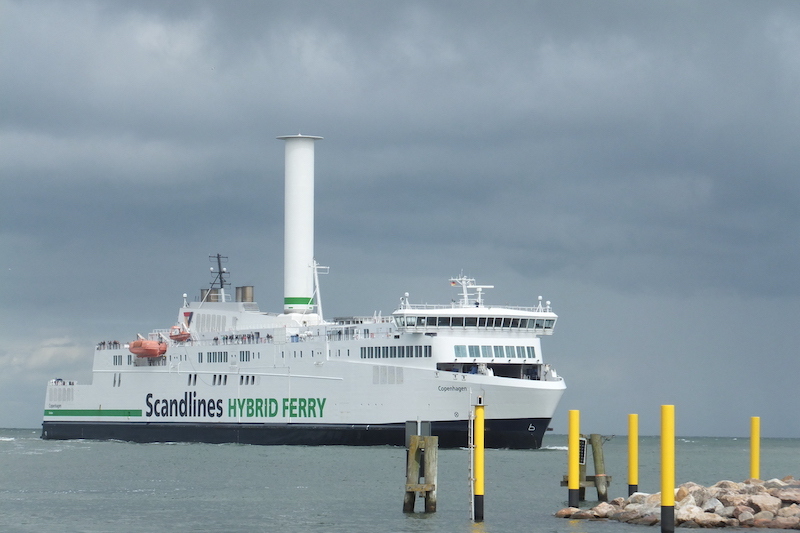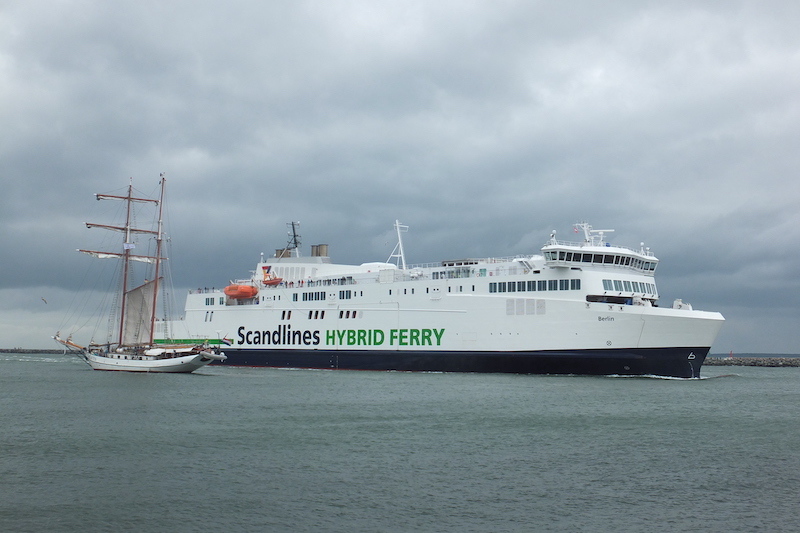Norsepower has announced that Scandlines has ordered a rotor sail installation on its hybrid ferry Berlin. According to a press release, this follows a successful installation of the Norsepower rotor sail on the hybrid ferry Copenhagen in 2020 and “a year of demonstrated results.”
Like its sister ship Copenhagen, the Berlin operates on the Rostock-Gedser route but is flagged by Germany. According to the press release, Scandlines’ 2019 decision to install a rotor sail on the Copenhagen was based on “technical data from the provider Norsepower Oy Ltd, a few other shipping companies’ experiences as well as its own studies and calculations.”
The Norsepower rotor sail was installed in May 2020, meaning now, Scandlines has had more than a year to collect data on how the Rotor Sail works on its hybrid ferries, and what effect it has on the route between Rostock to the south and Gedser to the north.
“We expected the M/V Copenhagen rotor sail to provide a 4-5 percent CO2 reduction. That expectation has been met, so we have now taken the next step and prepared the sister ferry Berlin for installation,” Scandlines’ Chief Operating Officer, Michael Guldmann Petersen, commented.
Norsepower said that the route of the Berlin is perfectly located to meet the requirement that gives the greatest benefit of the rotor sail for propulsion, “namely that the wind must be perpendicular to the sail.”
“Our route across the Baltic Sea is north/southbound, and the prevailing wind is from the west or east. In other words, our rotor sails have optimal conditions,” said Petersen.
Several of Scandlines’ other green initiatives on the way to emission-free ferries are not visible to the outside world, as they are below the water surface, Norsepower said. A rotor sail that protrudes 30 meters into the air, on the other hand, is “a very clear signal of a green vision.”

“There has generally been a lot of interest in the rotor sail – and in the beginning even wonder among the passengers about the ‘chimney.’ Most of the crew are now also masters of technical explanations that are easy to understand,” Petersen noted.
The CEO of Norsepower, Tuomas Riski, said that the company was “delighted” that Scandlines was “expanding its use of our rotor sail technology after achieving its CO2 emissions reduction targets on its first vessel, the M/V Copenhagen.”
“Our rotor sail technology is technically applicable to approximately 30,000 vessels in the current global fleet of ships and we hope that this is a further signal to ship owners and operators that confidence is growing in wind propulsion technology,” he said.
According to Norsepower, the preparation for the rotor sail includes building a steel foundation on the ferry, on which the rotor sail will be fixed. The initial work took place when the Berlin was on a planned yard stay at Remontowa in Poland at the end of May.
The installation of the rotor sail itself is scheduled for 2022.




